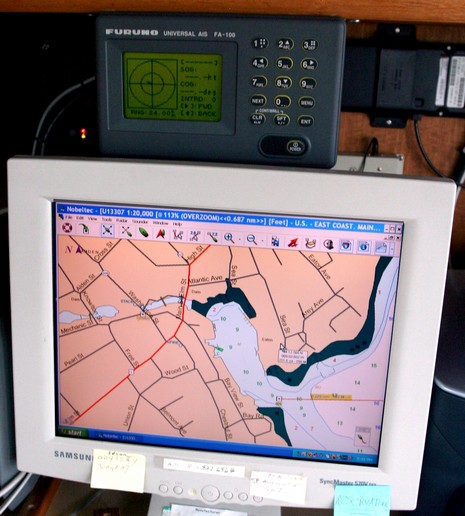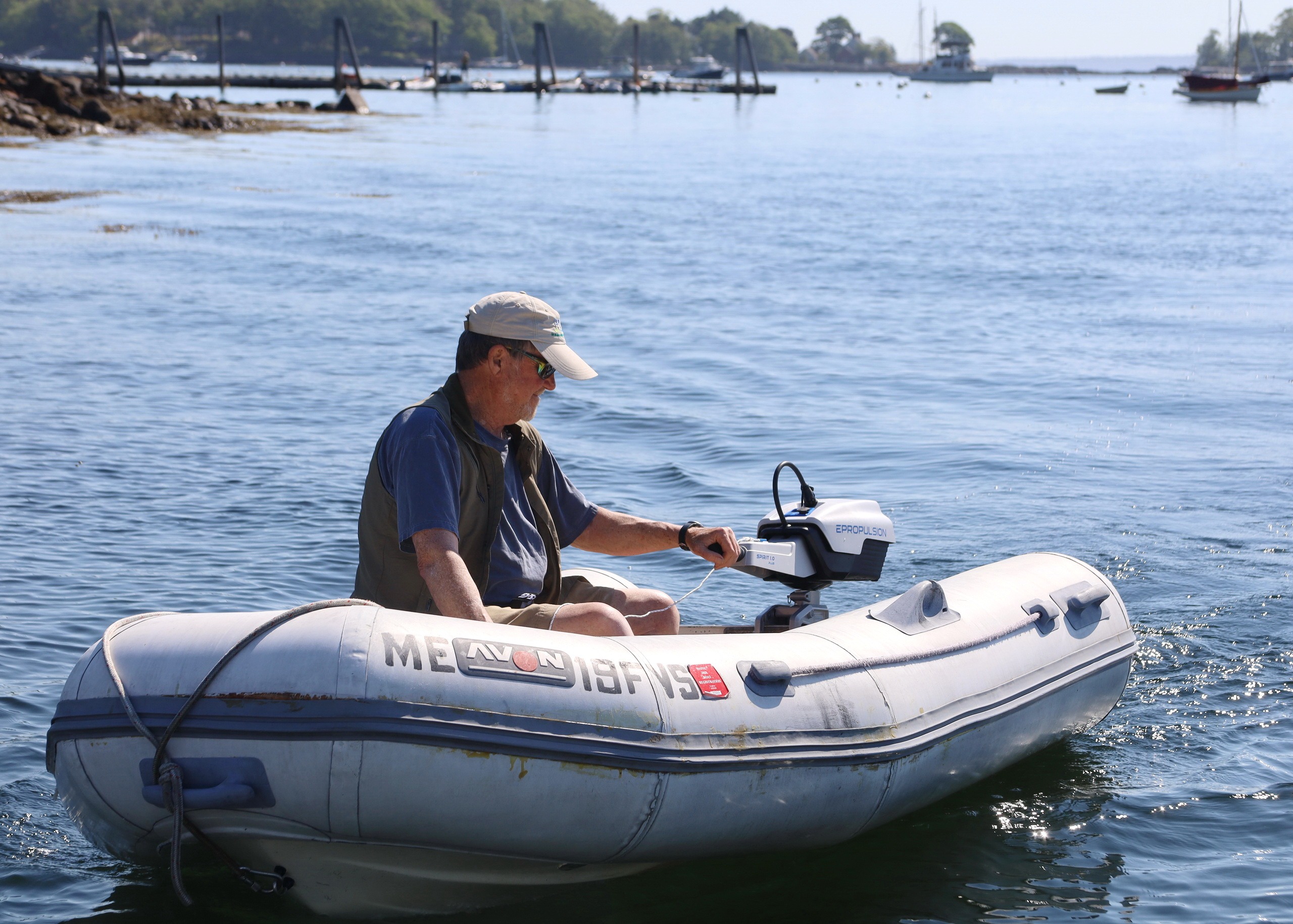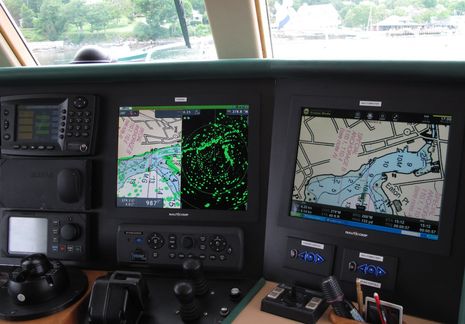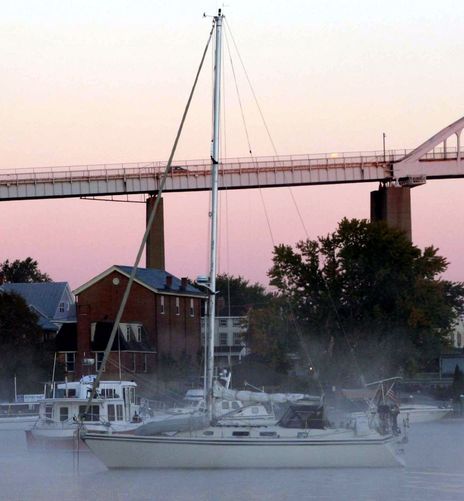To transpond or not, part 2

Here, and bigger here, is some gear installed at the communications desk just behind Spirit of Zopilote’s helm. Mind you that the 64’ SoZ is not required to carry AIS; skipper Bruce Kessler—a guy with approximately 25,000 hours at sea—voluntarily equipped himself with that full-on Class A Furuno FA-100 transponder. “I figure it’s important to us. We travel outside, we travel in the shipping lanes.” Kessler says (I’ve been listening to the interview tapes today). Of course he values the AIS target information showing on Nobeltec Admiral above and at his helm, but he also knows that at least some ships are seeing him in similar detail. Several times during his East Coast transit he had ship officers or pilots radio him—”call me by name, instead of ‘boat at …, course of…etc.’ and say something like‘we have a little problem here, that other vessel over there is…and would you mind moving a bit more to starboard…’. It’s just how we were hoping this would work!”
Not that the Furuno unit has been flawless. Apparently it’s been back for servicing once already and still won’t interface nicely with SoZ’s electronic compass. That’s why her AIS target at rest wasn’t quite right when I first spotted it a month ago. Nor is it easy to input data like the vessel’s dimensions, but that gave me an opportunity to fiddle with the thing. (Unlike a month ago, SoZ’s AIS target now shows correct dimensions, which are actually input relative to its GPS antenna, which means there’s some math involved, which may be why it gets messed up so often, as in yesterday’s entry).
At any rate, Kessler is a good example of a serious cruiser who has chosen to transpond, and is glad of it. But I’m sure he’s too damn salty to count on it. Which is good because—you might find this surprising—many ships out there don’t actually have a decent way to monitor the AIS data being received by their own transponder. In fact, take a look at the picture above again. That teensy plotting screen on the FA-100 (now superceeded by Furuno’s newer FA-150) actually exceeds the minimum specs for the Minimum Keyboard and Display (MKD), which is all that a ship is so far mandated to have in the wheelhouse. Transpond away, but you may not be noticed.













My experience is the “Static” AIS data (i.e. destination) is typically incorrect. I suspect oft it is a “set it and forget it” mentality on the transponders.
The Furuno FA-100 and FA-150 will only work correctly with an AD10 heading input, “Compass error or rate of turn error will appear if NMEA is used simply because NMEA isnt fast enough (even fast nmea @ 38 400bps)
There are a few converter boxes available on the market that will convert NMEA to AD10 format.
Also on large ships on busy shipping lanes will interface their AIS transponder onto a professional series radar like Furuno’s 2127 that allows for displaying of AIS targets and will warn of CPA and give ROT ect.
Also you will be amazed at how many British Fishing Vessels have the FA100 / FA150 fitted but dont transmit for fear of rivals tracking them.
Andrew
Furuno Technician
UK
Check out the Northstar MX 500 by MX marine a DGPS combined with AIS class A.